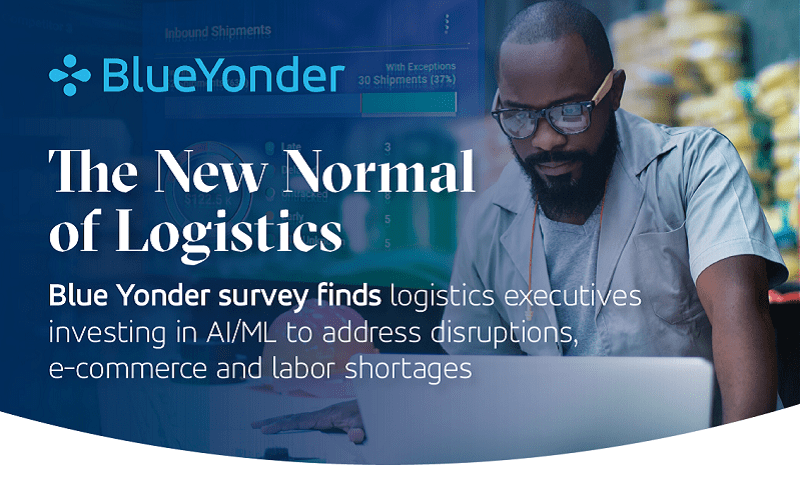Insights from the 2021 Logistics Executive Survey: The New Normal of Logistics
Our recently launched 2021 Logistics Executive Survey aims to seek out the “New Normal of Logistics.” The survey tracks the pulse of the market as logistics operations are emerging from the COVID-19 pandemic to periods of adjustments, redefinition, and eventually a new equilibrium. This is Part 1 of two blogs that will look at the survey results.
As discussed in my April Logistics Viewpoints blog, “Building Profitability with Agility while Digitally Transforming the Supply Chain,” as the world is seeing evidence that we are closer to the light at the end of the tunnel and looking forward to the post-pandemic recovery era, organizations are looking to invest and implement new, competitive differentiators.
Survey Background
During the pandemic, some companies chose to forgo ongoing improvement initiatives to focus on dealing with disruptions to their business. Other companies chose to continue or start their digital transformation journey to find better ways to operate, as their industrial/retail/e-commerce customers made adjustment to adapt to rapidly changing consumer behavior and expectations.
Given the pandemic pushed consumers toward more convenient fulfillment options for products and services, our goal was to identify the pressing priorities and investments post-pandemic for C-suite and senior logistics executives. More than a year after the start of the pandemic, we sought to learn their perspectives on:
- technologies that are essential to enable better logistics operations,
- investments in the supply chain necessary to improve customer experience,
- initiatives to elevate labor tightness, and
- emerging importance of sustainability.
2020 was about speed and availability, but 2021 will clear places at the table for other important performance categories, according to the C-suite and senior executives we surveyed across manufacturing, retail, third-party logistics (3PL), transportation, and warehousing, with responsibility for logistics and operations in the U.S.
Drivers for Investment
What are the reasons for the next waves of technology investments? Meeting growing customer expectations is the top priority for nearly half (over 47%) of respondents; this includes speed of delivery, personalization and availability. Reducing service costs for transportation, warehousing, and labor (25%) and improving resiliency toward disruption (18%) are the second and third priorities.
To drill on customer experience, we wanted to understand the most important factors for enhancing experiences as we transition to a post-pandemic environment. Logistics executives responded that the most important factor for enhancing consumer experiences post-COVID-19 is maintaining and optimizing convenient fulfillment options (38%), including curbside pickup, BOPIS, and at-home delivery. Rather surprisingly, the second most important priority (21%) is increasing sustainable delivery options (eco-friendly packaging, flexible delivery windows, grouping orders, etc.). And, rounding out the top three is ensuring consistent on-time delivery with effective customer communication.
Top Technologies
We also surveyed executives to learn what areas of logistics technologies they plan to implement and/or enhance in the next 12 months. With disruptions impacting the supply chain over the past 12 months, consumers’ high expectations for service levels have not wavered, forcing retailers and manufacturers to maintain efficient, fast fulfillment.
The top two technologies executives plan to implement/enhance is warehouse management systems (WMS) and cloud infrastructure – both at 48%. This is consistent with our understanding six months ago when worldwide economies were showing the first signs of recoveries. Rounding out the top five logistics technologies are AI/ML (42%), sales & operations execution and planning (42%), and transportation management dystems (41%).
Our interpretation is that the physical and operational logistics footprint is quickly modifying. Fulfillment is key to meeting rising expectations. Labor shortages (see more below) and coordination between supply chain nodes necessitate system improvements. Top of mind is the logistics systems related to fulfillment process improvement and scalability of IT infrastructure.
The recognition and acceptance of AI/ML in helping decision-making in supply chain execution timeframe (next half day, next hour and next minute) propels it to be among the top five technologies to be implemented within the next year. The Future of Logistics eBook covers how by unifying logistics, organizations have the opportunity to leverage these top technologies to achieve omni-channel execution performance and customer-centric supply chain.
When asked about the reality of having to make difficult choices and ranking the barriers to investment in these logistics technologies, two factors stood out in a virtual dead-heat: speed/time needed to deploy and costs, followed by risks, anticipated ROI, and executive support.
Dealing with Tight Labor Situations
The surge in e-commerce orders, multiple rounds of stimulus funds, and a shortage of talent has led logistics executives to deal with a tight labor market. To meet fulfillment goals, logistics executives aim to fill the workforce void with a multipronged approach focused on strategic technology investments, and more flexible hiring and scheduling.
When asked about the top initiatives to address the tight labor market over the next 12 months, 54% of logistics executives plan to invest in workforce management technologies and 51% plan to invest in enhanced workforce training procedures.
As the economy recovers, will the labor market for logistics get tighter? The survey results may give the latest pulse. To attract and retain labor/talent, companies are offering more competitive pay and bonus structures, providing higher levels of training to upskill current employees, followed by being more lenient on specific job/industry experience of job candidates, and creating/offering more flexible scheduling options.
More to Come
The insights above will hopefully benefits decision-makers as they continue to explore initiatives that will orient their logistics operations toward excellence in performance. In Part 2, we will discuss the survey results and insights in areas such as sustainability.
For more information about the Logistics Executive Survey:
- Watch our LinkedIn Live session
- Read the Executive Summary
- Check out the Infographic
Learn more about how Luminate Logistics provides an end-to-end execution platform to help drive flexible, fully autonomous distribution networks.

